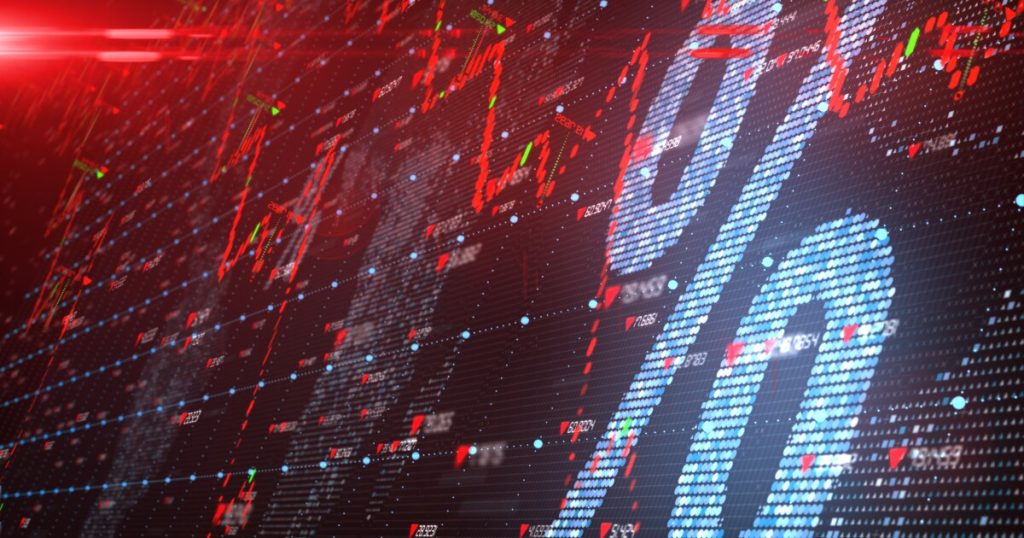Bank stocks have benefited from yearslong efforts to strengthen liquidity levels, build capital cushions and clean up credit. President Donald Trump’s tariff policies have crushed those stock gains.
And this might not be the nadir for bank stocks. Even though they don’t face direct hits from tariffs, there are revenue risks that come with the policies, D.A. Davidson analyst Peter Winter told American Banker. The sector’s punishment in the market is an indicator of broader concern about the economy.
“It talks about the health of commercial businesses, it talks about the health of the consumer,” Winter said. “Are you seeing increased credit costs? Is there borrowing taking place to make capital investments for future growth? The banks are really the barometer on the health of the economy, which I think is why it’s such a focus, even though there’s no direct tariff exposure.”
The KBW Nasdaq Bank Index fell more than 7% at some points Friday, while big banks like JPMorgan Chase, Wells Fargo, Bank of America and Citigroup all saw their stocks drop some 8%. The index ended nearly 10% lower on Thursday and is down about 17% for the year to date.
Regional banks, like M&T Bank, Regions Financial, Fifth Third Bancorp and SouthState Bank, experienced sell-offs from 5% to 8% on Friday.
Winter said he expects banks to lower their guidance for 2025 performance during first-quarter earnings presentations, which are slated to start next week.
As already tepid loan demand drags on earnings, tariffs may further
Some economists and investors, along with Trump, think the tariffs could drive the Federal Reserve to cut interest rates. A substantial drop in rates could mark a boon for banks, through a jump start to loan demand or by making merger-and-acquisition options more compelling.
However, Fed Chair Jerome
“We’ve taken a step back and we’re watching to see what the policies turn out to be and the ways in which they will affect the economy, and then we’ll be able to act,” Mr. Powell said at a conference in Arlington, Virginia.
Winter and other D.A. Davidson analysts wrote in a Friday note that they’ve seen “a complete whiplash in investor expectations for banks in the last 6 months.” JPMorgan’s Chief Economist Bruce Kasman said he thought a recession was now more likely than not in a Thursday note titled, “There will be blood.”
He added in an interview that although Trump levied tariffs in his first administration, the situation now at hand is unprecedented.
“It doesn’t seem like these countries are going to back down so easily,” Winter said. “All of a sudden we have a trading war.”
The flip side
Michael Perito, head of bank strategy at consulting firm Travillian, said Friday that the banking industry has generally seen relatively limited capital inflows since the financial crisis — the KBW Nasdaq Bank Index was trading Friday at similar levels to October 2007.
“It’s a group that’s perpetually been underweight by institutional investors,” Perito said. “What was really freaky is how fast the Trump bump reversed. There was a fury of capital markets activity in December … and then it just died.”
He said, though, that many smaller and midsize banks have been “put through the ringer” over the last four years, between pressures from the pandemic, the rapid rise of interest rates, the 2023 banking crisis and commercial real estate strain. But, he said, they’re stronger for it now.
While he isn’t overweight on the industry as a whole, Perito said there are some financial institutions that could eventually land on the other side of headwinds as winners.
“If there are banks that sold off 10% yesterday that are in good markets — in the southeast, for example — and you’re reasonably confident about their capital, credit and liquidity, this could be a really interesting buying opportunity for those types of banks,” Perito said.

